
Shade Trees form an important part of the natural landscape here in the South Carolina Lowcountry and the focus my thoughts this Arbor Day. While some in our community would like to uproot grand oaks standing along our most scenic highways, others have successfully defended the venerable trees from the ravages of modernity. The moss-draped canopy they provide isn’t just a picturesque feature of our rural roads, it’s the manifestation of an ancient law rooted in the protection of travelers from highway robbers in Medieval England.
Our modern notion of Arbor Day as a tree-planting holiday dates back to April of 1872, when dendrophile J. Sterling Morton organized a mass tree-planting event in Nebraska. In the ensuing years, the idea of an annual tree-planting holiday spread across the United States and beyond, with most states organizing their tree-planting campaigns in late April. Up North, the weather in April is still sufficiently cool and damp to give transplanted trees time to adjust to their new soil. Down South, however, it’s already too warm for that business in late April, and so Arbor Day is observed by various states in different months. South Carolina, for example, officially observes Arbor Day on the first Friday in December, and we’re the only state in the union celebrating the holiday this month.
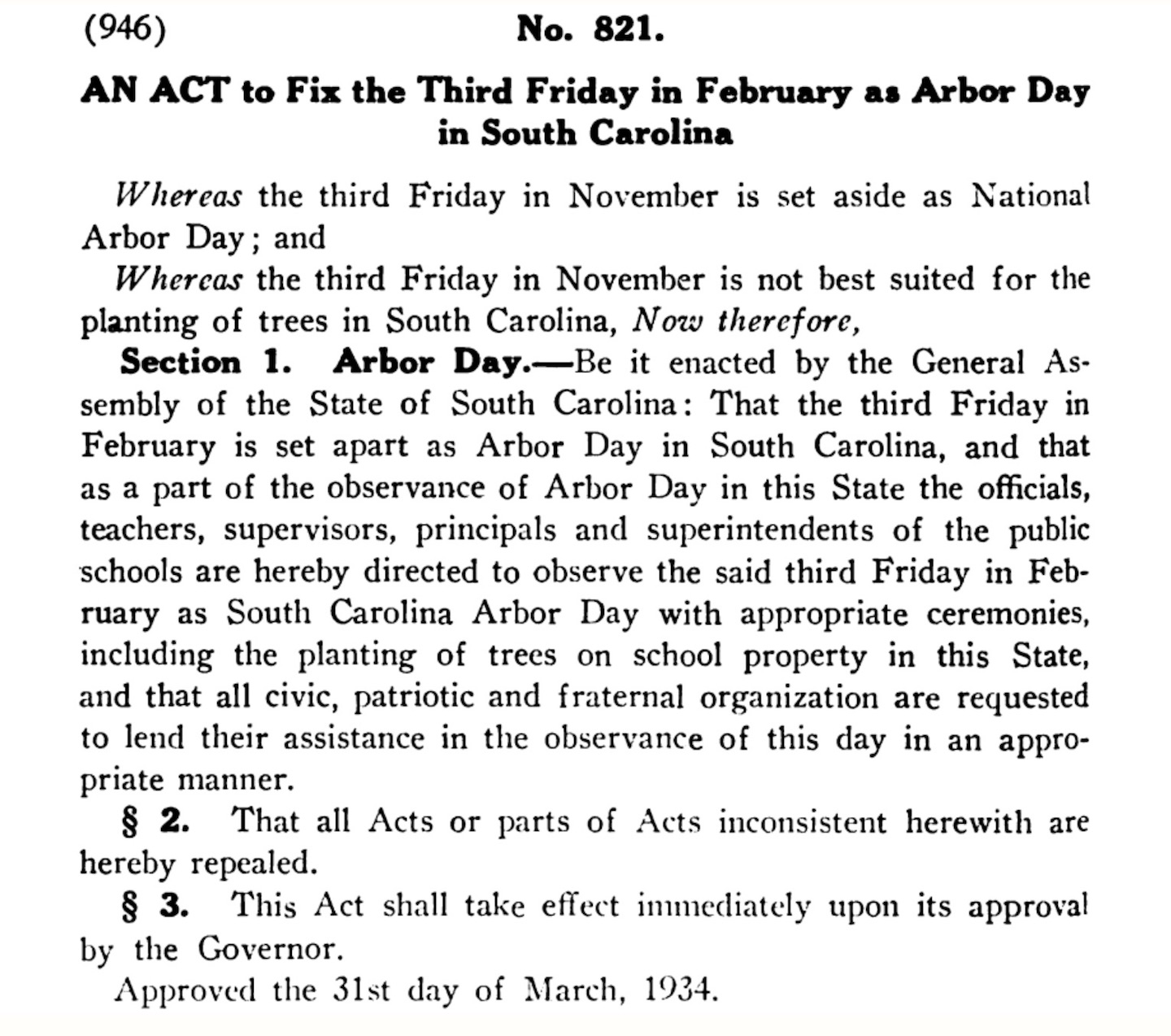
Several municipalities in South Carolina conducted local Arbor Day events in the early 1890s, and perhaps earlier, but there was no centralized effort to coordinate such activities across the Palmetto State. The idea of making it an official state holiday originated with the State Superintendent of Education, William D. Mayfield, who held that office for most of the final decade of the nineteenth century. In the annual report he submitted in December 1897, Mr. Mayfield provided the following suggestion: “There should be one day in each year set apart for tree planting, and a general observance of this day by all of the public schools of the state should be required. Children should be taught to place a proper value on shade and ornamental trees. The school grounds, many of which are now without trees, and wholly unimproved and uninviting, could be beautified and rendered attractive and pleasant. I suggest that the third Friday in November of each year be designated as Arbor Day.”[1]
Just a few weeks after the publication of Superintendent Mayfield’s report, on January 13th, 1898, State Representative Arthur Kibler of Newberry introduced a bill to the South Carolina General Assembly “to require the public schools to observe the third Friday in November of each year as Arbor Day.” The bill met with little resistance in the legislature, and on February 16th, the General Assembly ratified a law—containing just one sentence—that embraced Mr. Mayfield’s suggestion: “That the free public schools of this state shall observe the third Friday in November of each year as Arbor day, and on that day the school officers and teachers shall conduct such exercises and engage in the planting of such shrubs, plants and trees as will impress on the minds of the pupils the proper value and appreciation to be placed on flowers, ornamental shrubbery and shade trees.”[2]
Nearly four decades later, some South Carolinians felt that our version of Arbor Day wasn’t rooted in the optimal season for the successful transplanting of trees. Accordingly, on March 31st, 1934, the South Carolina General Assembly revised the date of our statewide holiday. The new law observed that “the third Friday in November is not best suited for the planting of trees in South Carolina,” and so Arbor Day officially moved to the third Friday in February, commencing in 1935. Finding this revised date to be equally unsuited to our state’s diverse climate zones, the South Carolina legislature adopted another legal revision on May 25th, 1940, transplanting Arbor Day to its current designation on the first Friday of each December.[3]
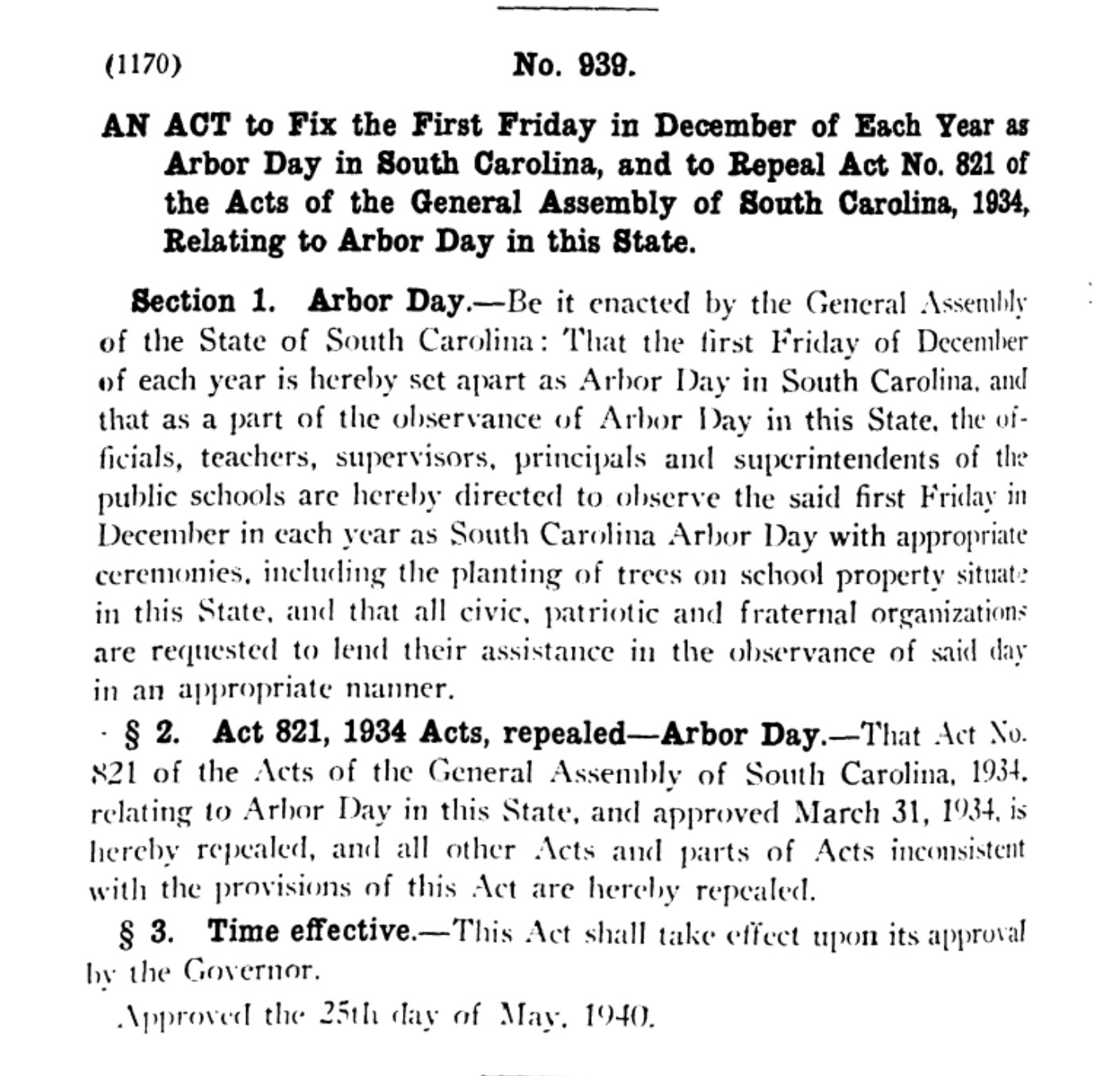
Prior to the mid-twentieth century, South Carolina’s economy was dominated by various branches of agriculture. Our state’s soils are indeed rich and fertile, but the landscape was not naturally clear and ready for the plow. The early settlers who came to Carolina found a vast, dense, and ancient forest, interrupted only by waterways, salt marshes, and green savannahs scattered throughout the coastal plain. To farm the land, early settlers first had to cut down lots and lots of trees. In fact, wood products formed South Carolina’s first exports. Starting in the 1670s and continuing for generations, we shipped out sawed timber, ship masts and spars, barrel staves, roofing shingles, and firewood to other English colonies in the Caribbean. Live oak trees made excellent materials for use in the ship building industry, both locally and in the northern colonies. By extracting and processing the natural resin from our plentiful pine trees, South Carolinians produced a prodigious volume of tar, pitch, turpentine, and rosin for the Anglo-American maritime trade.[4]
In the early decades of the Carolina colony, white settlers and enslaved Africans chopped and sawed their way through many thousands of acres of Lowcountry forests. This work cleared additional land for South Carolina’s second big business, cattle grazing, which turned a handsome profit by exporting salted beef to neighboring colonies. Farming crops in the soil, which had commenced with the first settlers in 1670, expanded into large-scale planting only after sufficient quantity of land had been cleared of trees and stumps. Rice, for example, became South Carolina’s first export crop in the late 1690s, and grew to dominate our economy in the eighteenth century. That agricultural business, which forms such an important part of our shared history here in the Charleston area, could not have succeeded with out the labor of tens of thousands of enslaved Africans who removed and processed the trees and reshaped the landscape to make it suitable for the cultivation of rice.[5]
Consider, for a moment, the vast quantity of land cleared by man and beast in the first century of European settlement in the Charleston area, transforming virgin forests into verdant fields of corn, rice, indigo, cotton, and other crops. The Native Americans who inhabited the Lowcountry centuries ago did not possess iron tools to chop trees. Using sharp stones, they laboriously carved wooden canoes and otherwise made sparing use of the natural forests. The European settlers and enslaved Africans who began arriving in 1670, on the other hand, used iron and steel tools to cut down and process millions of native oak, cypress, cedar, pine, palmetto, and other trees. After countless millennia of natural growth cycles that included occasional destructive storms and brush fires, Lowcountry forests changed dramatically after the arrival of humans from across the seas.
The landscape you would have seen here in, say, the year 1770, was very different from what you see today. Driving down Bee’s Ferry Road, west of the Ashley River, or Long Point Road, east of the Cooper, for example, one sees new shops and homes nestled within a dense and somewhat swampy forest, often dominated by pine trees. Prior to the collapse of the plantation economy in the 1860s, however, these areas were mostly devoid of trees and planted with profitable crops. Tracts of “old growth” forest, dominated by live oaks and bald cypress trees, are now exceedingly rare in the Lowcountry thanks to the long legacy of plantation farming and logging. When you visit a site like Drayton Hall or Middleton Place, or drive down any of the rural roads that traverse our community, most of the trees in view represent the regeneration of natural forest that commenced in the years after the phosphate-mining boom of the late nineteenth century and the pulpwood-timber-farming bonanza of the early twentieth century.
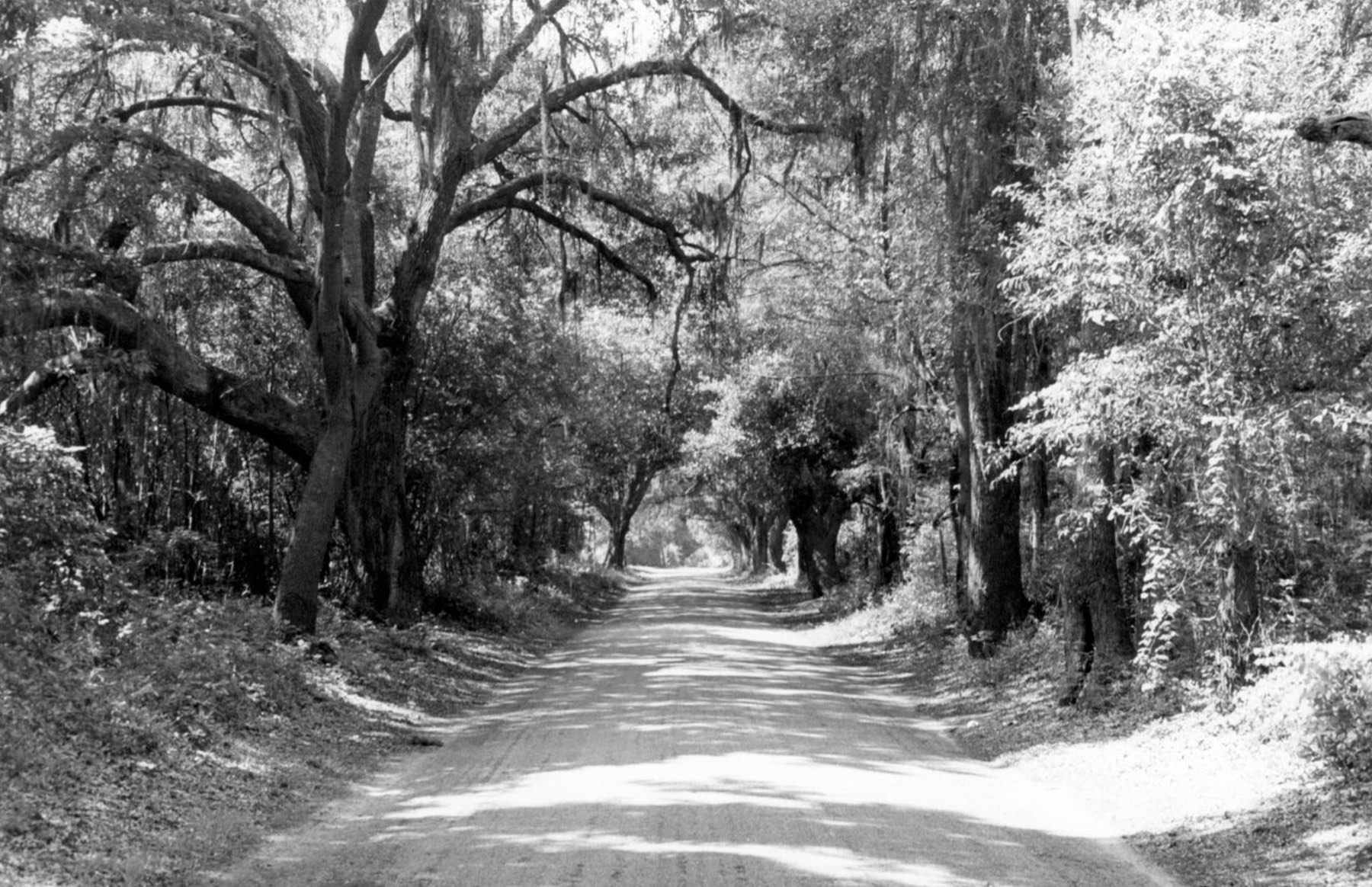
Highway robbery is an ancient crime in which thieves prey on individuals traveling along one of the “high” roads or public thoroughfares of various communities around the world. To combat this and other types of criminal behavior in Medieval England, King Edward I issued a law in the year 1285 that became known as the Statute of Winchester. This important document, which formed the cornerstone of law enforcement policies throughout the English-speaking world, also sought to stem the common practice of highway robbery by denying thieves a hiding place along rural roads. Oaks and other “great trees” were allowed to remain along either side of the road, but the Statute of Winchester ordered property owners to remove all other roadside features, “so that there be neither dyke, underwood, nor bush whereby a man may lurk to do hurt, near to the way, within two hundred foot of the one side and two hundred foot on the other side.”[6]
Fast forward now to the early days of English settlement in the South Carolina Lowcountry. Besides clearing forests for plantation agriculture here, early colonists also created a law enforcement system based on centuries of practice with the framework established by the Statute of Winchester. Roads connecting urban Charleston with rural plantations gradually evolved from footpaths to a network of narrow, sandy, public highways, maintained by property owners whose land abutted the respective roads. At least some colonists followed English tradition by removing road-side obstructions that might give shelter to would-be robbers. We know this because complaints about the practice eventually convinced the South Carolina General Assembly to revise the Medieval practice to suit local conditions.
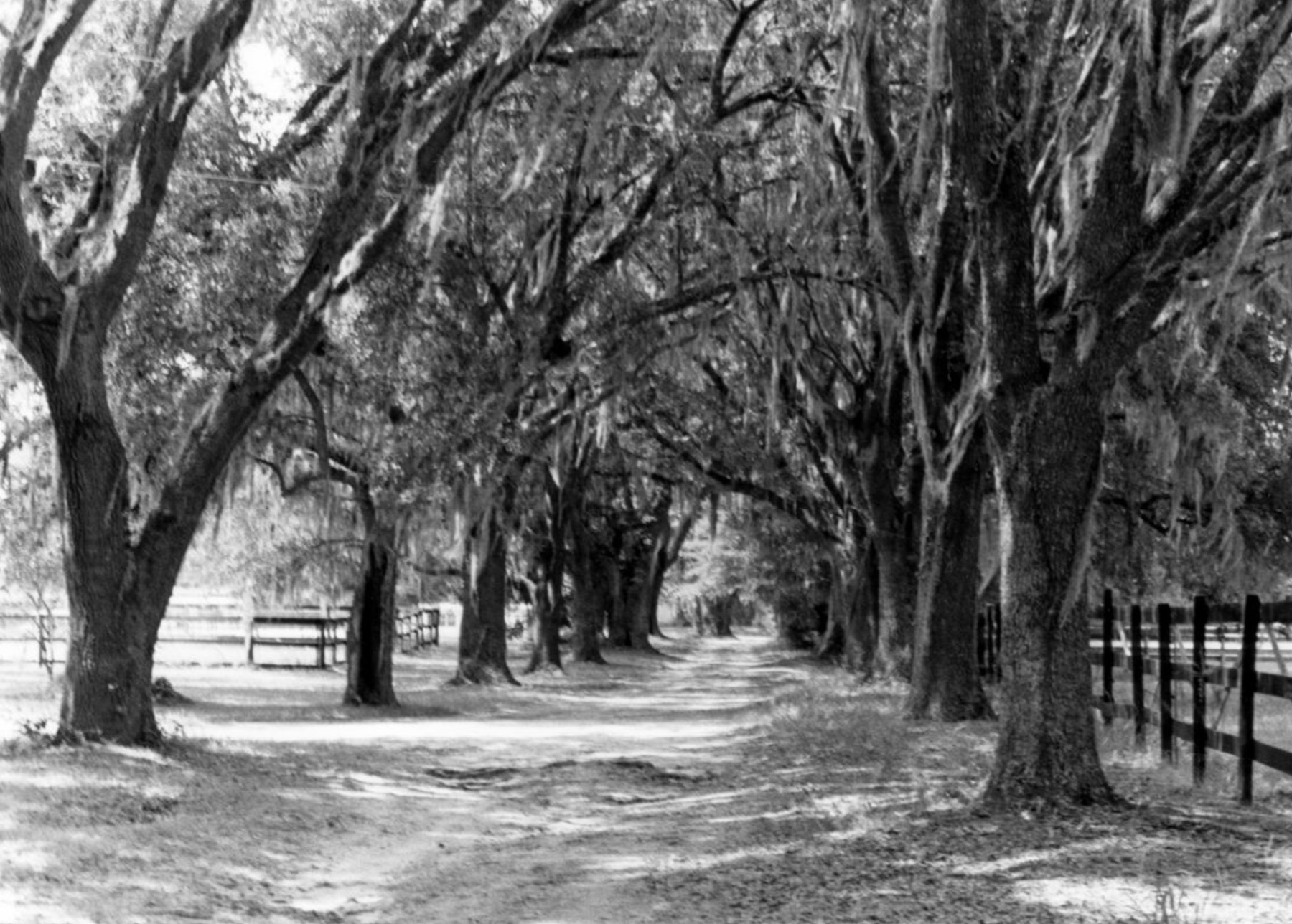
From that moment forward, the country roads of Lowcountry South Carolina developed into narrow paths of sand cooled by the dappled shade of live oak trees draped with melancholy stands of Spanish moss. But this legal protection was only as strong as its enforcement within the rural landscape. In the spring of 1743, for example, members of a Charleston grand jury complained “that a law enjoyning [sic] the leaving ten feet of standing woods on each side of all high roads, in this province is not observed and duly executed by the several Commissioners of the High roads in their several districts throughout this province.”[8] Nearly thirty years later, in 1770, another grand jury complained of the frequent violation of “the law for restraining people from cutting down trees, within a certain distance on each side of the public roads, if there be such a law in force, and if there is not, we recommend the necessity of such a law, for the benefit and relief of travelers, as well as making those roads more ornamental to the country.”[9]
Despite this evidence of negligence, there is also plenty of evidence that the 1721 law did eventually take root (pun intended). The survival of many ancient trees and descriptions penned by eye-witnesses indicate that by the end of the eighteenth century, most of the rural roads in the Lowcountry were shaded by the branches of trees growing along the verge or shoulder. In 1774, for example, an anonymous visitor to the Charleston area recorded his or her impressions of the place. “All the roads throughout this and the other provinces to the northwards,” they wrote, “are very good, broad and charmingly shaded with lofty pines, oaks, and cedars. . . . The trees of South Carolina are loaded with a particular kind of moss peculiar to that province [that is, Spanish moss], which hangs down over the branches a yard or two in length and almost covers them and the leaves: it has a very venerable look and casts a pleasing gloomy shade along the roads, which makes travelling inexpressi[bly] [r]ural and agreeable in that country.”[10]
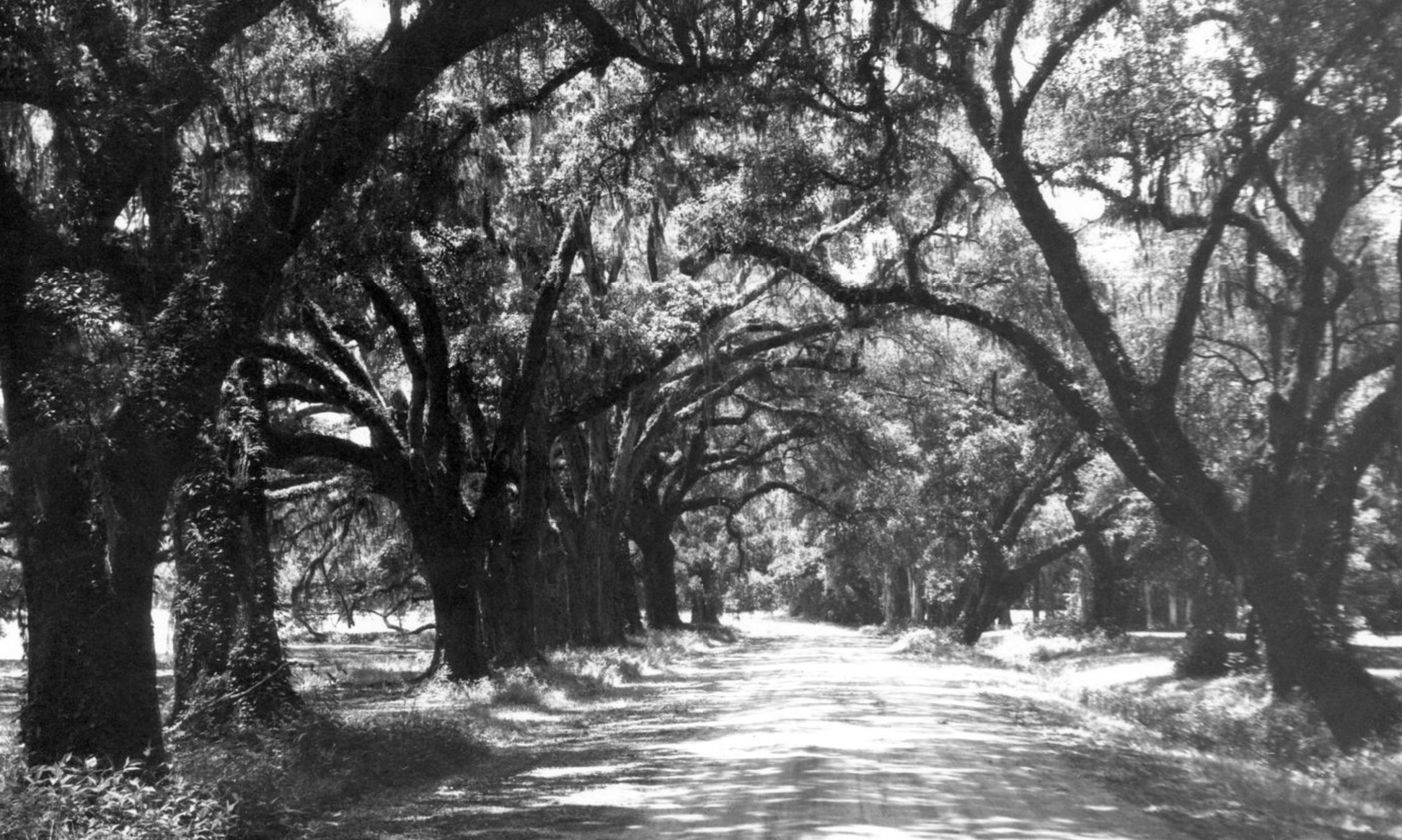
We could, with sufficient time and interest, continue this conversation about historical tree protection into the urban confines of downtown Charleston. As early as the year 1750, for example, our local government deemed it important to encourage citizens to plant trees in front of their urban homes to shade pedestrians traversing the ancient sidewalks of the colonial capital. The paper trail of that story is so rich and interesting, however, that we’ll have save it for a future occasion. But the take-away is very similar to today’s conversation. The tree-scape we see today along the public streets and roads of Charleston County is not simply the result of modern urban planning or recent highway management policies. The early settlers of this area brought with them traditions and practices that re-shaped the natural landscape in many ways that are still visible today, if your eyes are historically informed.
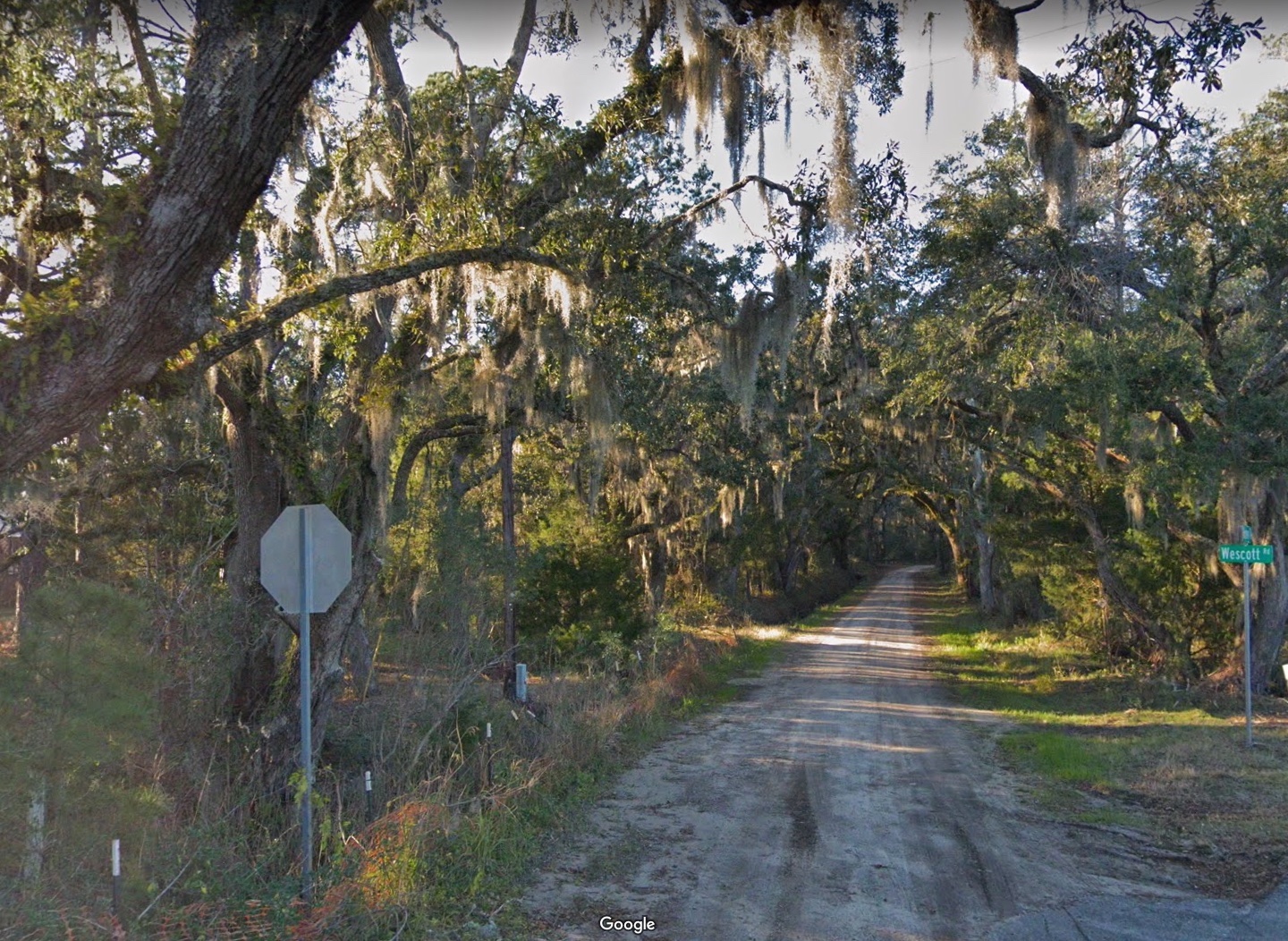
[1] See South Carolina, State Dept. of Education, Twenty-Ninth Annual Report of the State Superintendent of Education of the State of South Carolina, 1897 (Columbia, S.C.: The State Company, 1898), 369–70.
[2] Charleston Evening Post, 13 January 1898, page 1; “An Act to require the public schools of the State to observe the third Friday in November of each year as Arbor Day,” ratified on 16 February 1898, in South Carolina, Acts and Joint Resolutions of the General Assembly of the State of South Carolina, Passed at the Regular Session of 1898 (Columbia, S.C.: The Columbia Register Print, 1898), 760–61.
[3] “An Act to fix the third Friday in February as Arbor Day in South Carolina,” ratified on 31 March 1934, in South Carolina, Acts and Joint Resolutions of the General Assembly of the State of South Carolina, Regular Session of 1934 (second part of Volume 38 of Statutes at Large), 1422; “And Act to fix the first Friday in December of each year as Arbor Day in South Carolina, and to repeal Act No. 821 of the Acts of the General Assembly of South Carolina, 1934, relating to Arbor Day in this State,” ratified on 25 May 1940, in South Carolina, Acts and Joint Resolutions of the General Assembly of the State of South Carolina, Regular Session of 1940 (second part of Volume 41 of Statutes at Large), 1824.
[4] For information about the uses of forest products in early South Carolina, see, for example, Converse D. Clowse, Economic Beginnings in Colonial South Carolina, 1670–1730 (Columbia: University of South Carolina Press, 1971); Justin Williams, “English Mercantilism and Carolina Naval Stores, 1705–1776,” Journal of Southern History 1 (May 1935): 169–85; S. Max Edelson, Plantation Enterprise in Colonial South Carolina (Cambridge, Mass.: Harvard University Press, 2006).
[5] Hayden Ros Smith, “Rich Swamps and Rice Grounds: The Specialization of Inland Rice Culture in the South Carolina Lowcountry, 1670–1861,” Ph.D. diss., University of Georgia, 2012.
[6] George Burton Adams and H. Morse Stephens, eds., Select Documents of English Constitutional History (New York: Macmillan, 1901), 78.
[7] Act No. 442, “An Act to empower the several Commissioners of the High Roads, private paths, bridges, Creeks, causeys [sic], and cleansing of water-passages, in this Province of South Carolina, to alter and lay out the same, for the more direct and better coveniency [sic] of the inhabitants thereof,” ratified on 15 September 1721, in David J. McCord, The Statutes at Large of South Carolina, volume 9 (Columbia, S.C.: A. S. Johnston, 1841), 56 (of 49–57).
[8] South Carolina Gazette, 28 March 1743.
[9] South Carolina Gazette and Country Journal, 23 January 1770.
[10] H. Roy Merrens, ed., The Colonial South Carolina Scene: Contemporary Views, 1697–1774 (Columbia: University of South Carolina Press, 1977), 286–87.
PREVIOUS: The Genesis of the Harleston Neighborhood, 1672-1770
NEXT: Christmas Traditions in Early Charleston
See more from Charleston Time Machine
